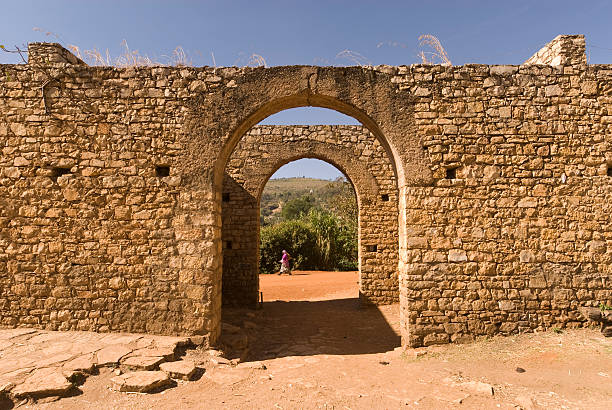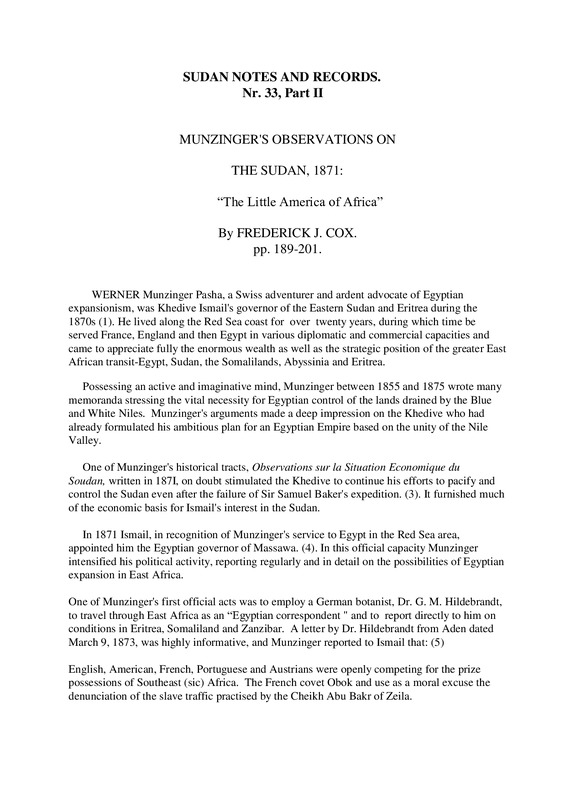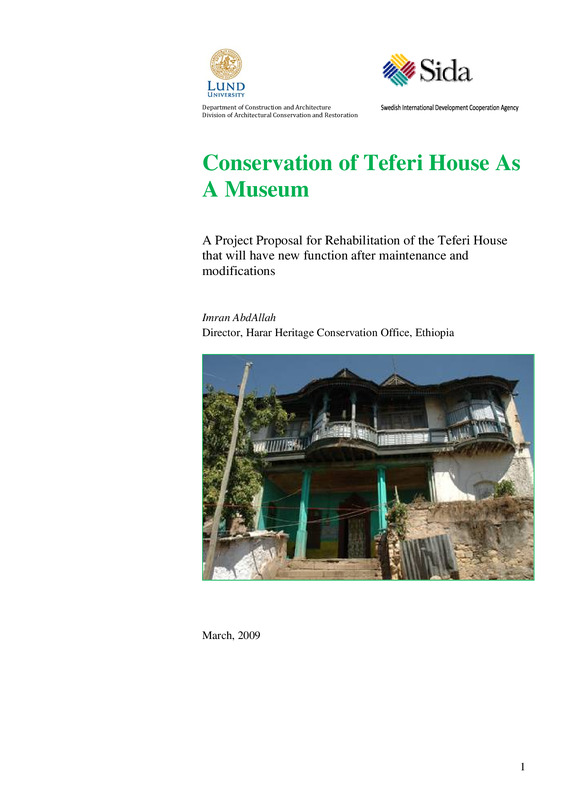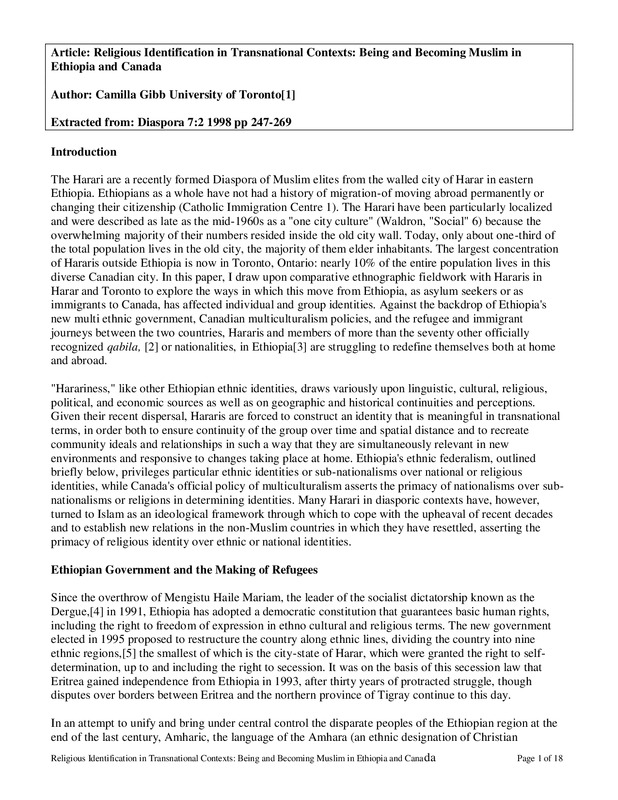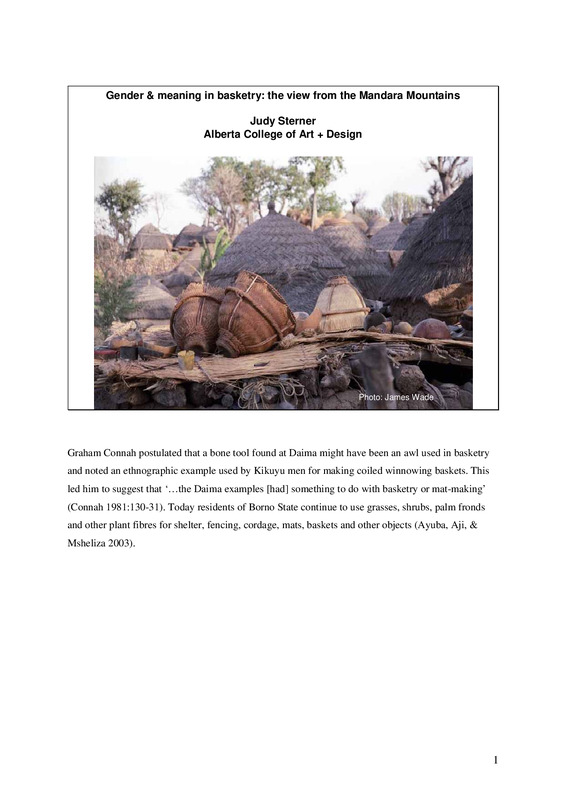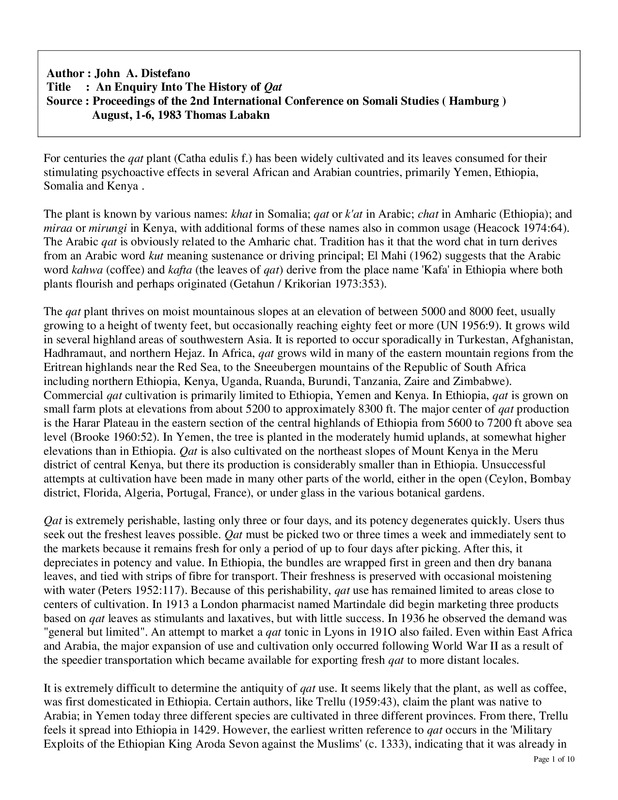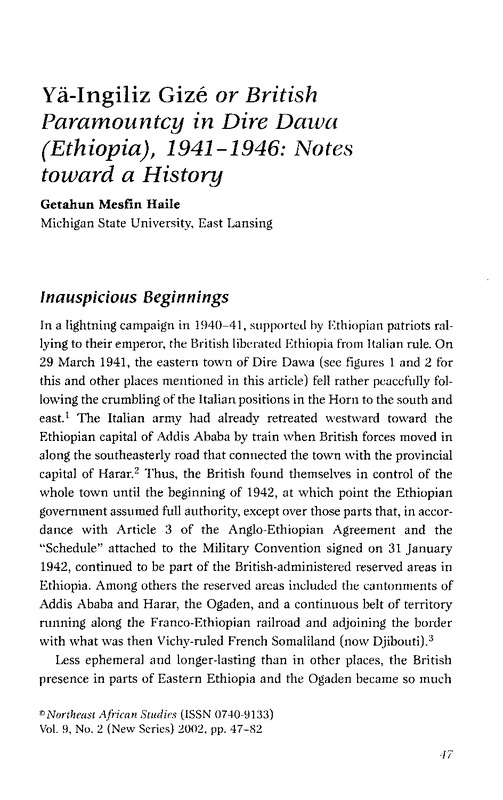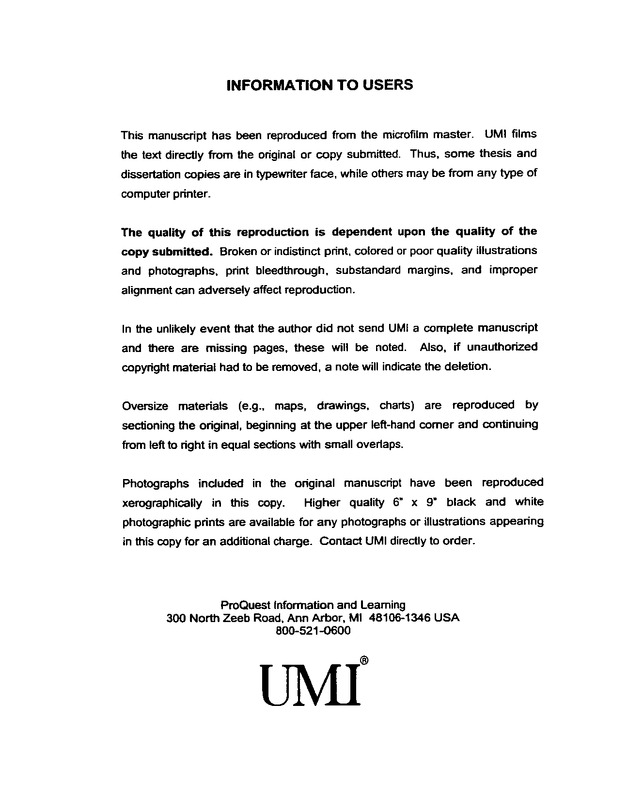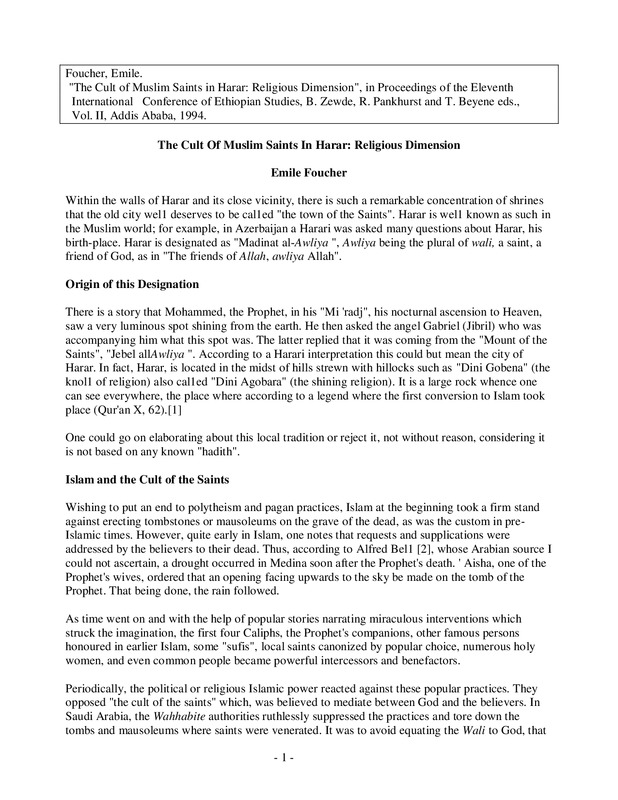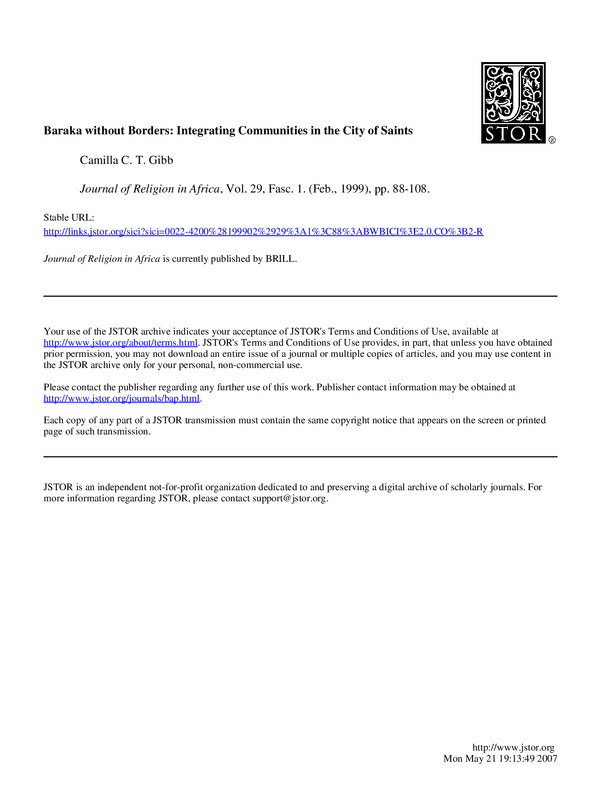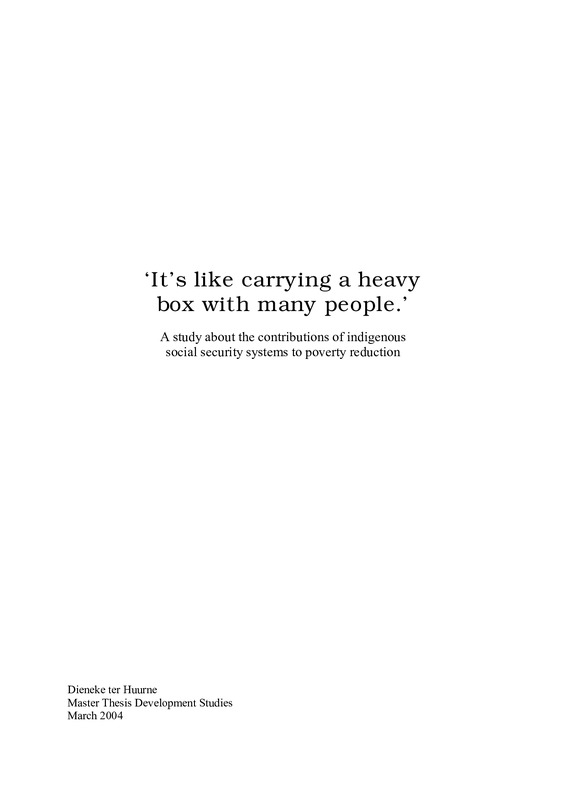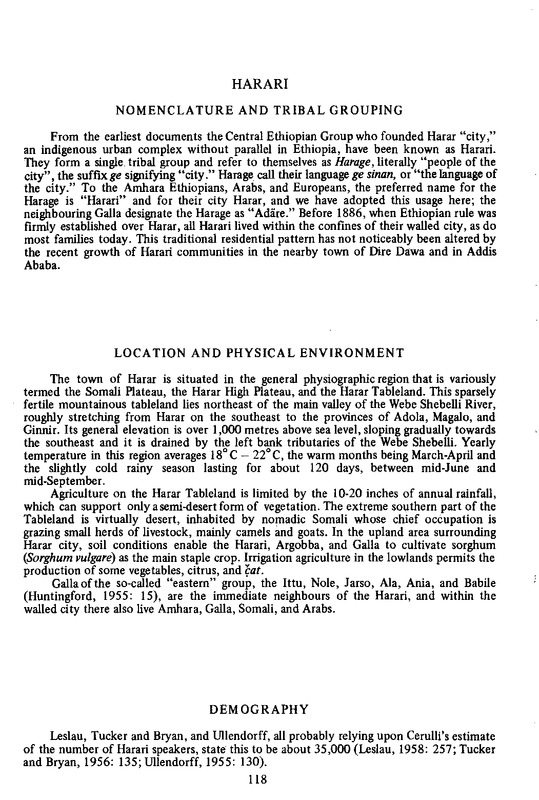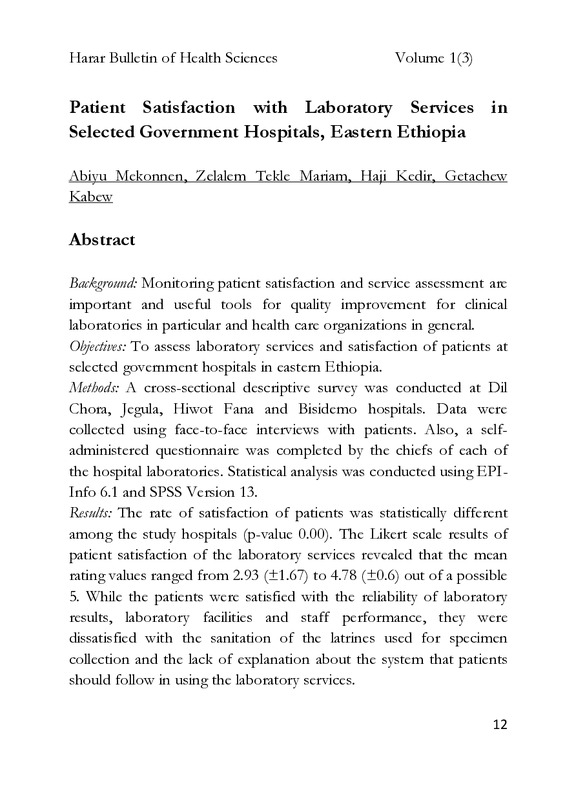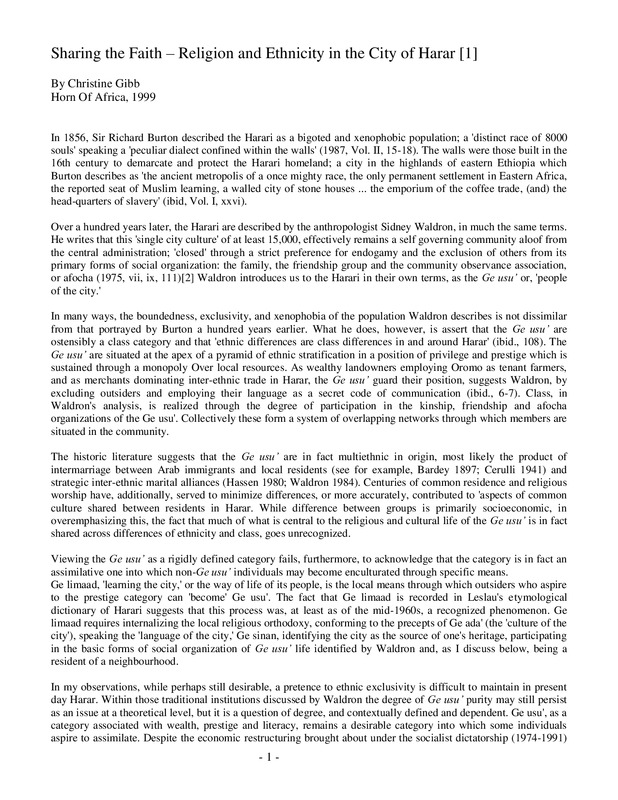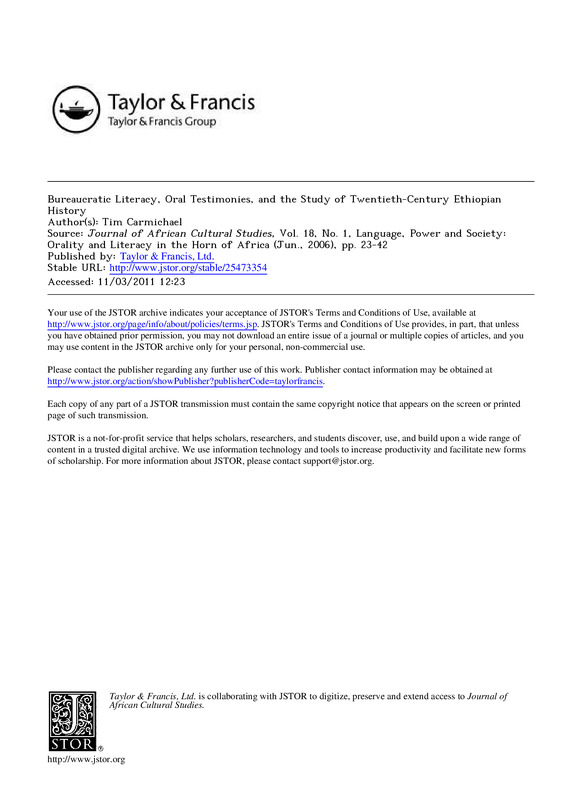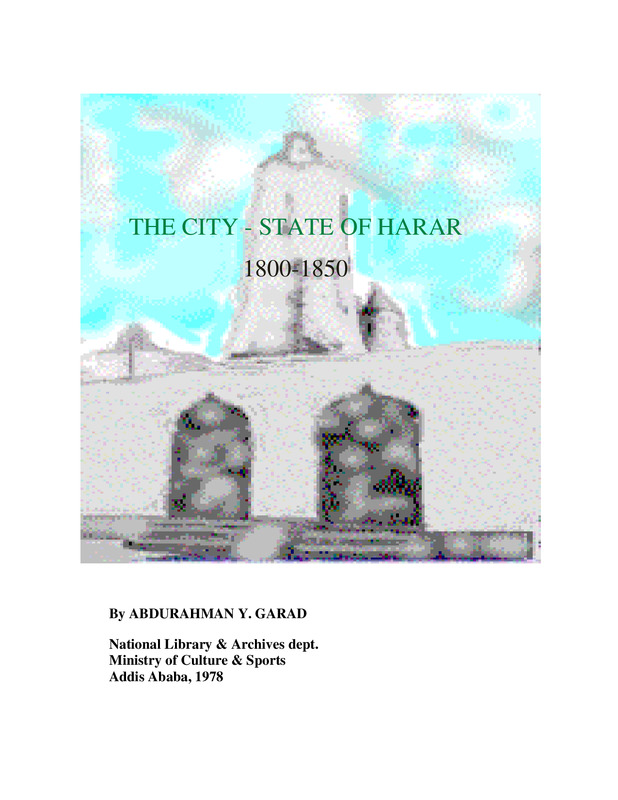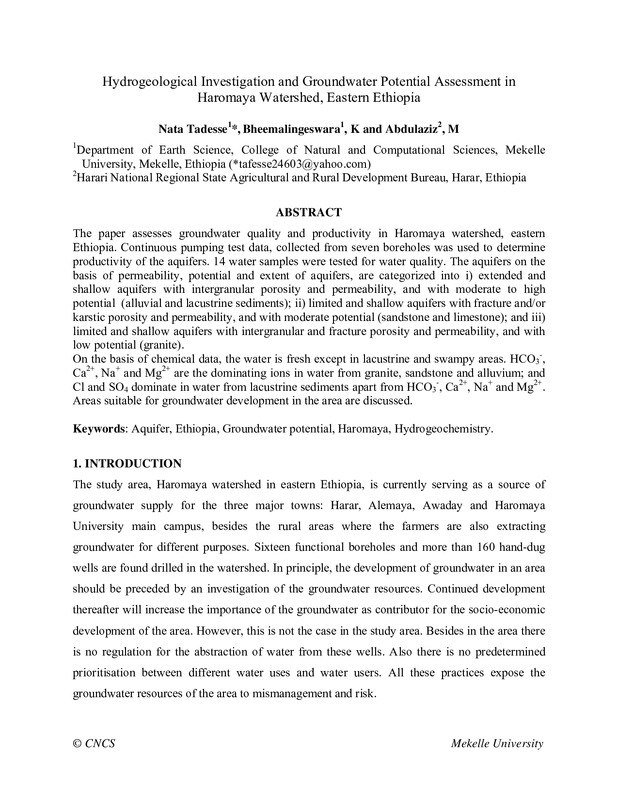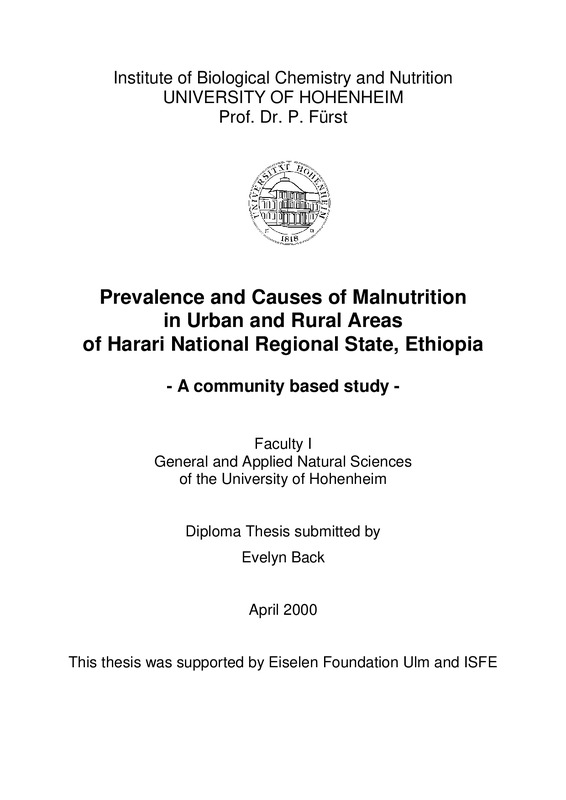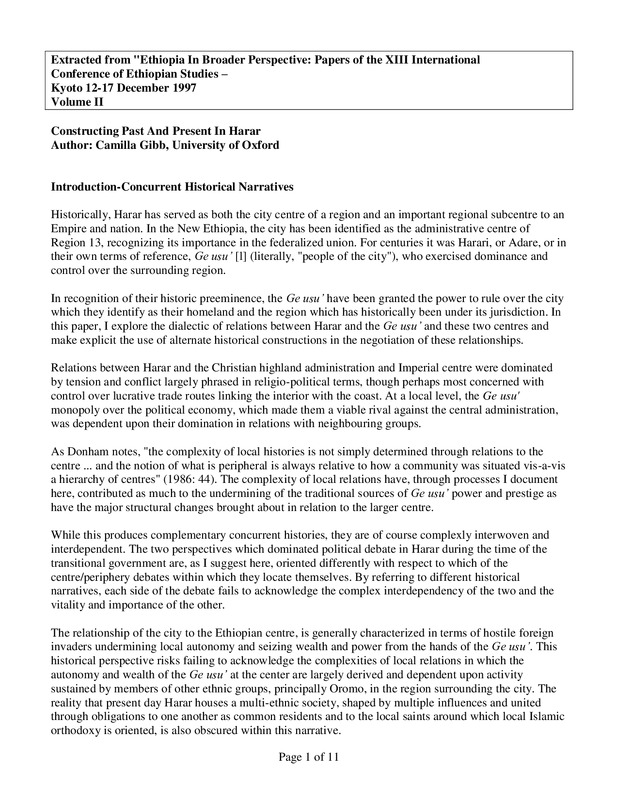Items
-
MUNZINGER'S OBSERVATIONS ON THE SUDAN , 1871Date: 1871Thus Ismail's East African Empire became a reality in 1875-- a reality that was very disturbing to the major European colonial powers. However, the Khedive's leitmotiv was the control of the Blue and White Niles and their tributaries. The occupation of Keren, Harar, Aussa, Zeila and Berbera were a necessary complement to the creation of the Khedive's Central African Empire, centering on Khartoum.
-
The Portuguese Expedition To ABYSSINIA in 1541-1543Date:Edited R.S. WHITEWAY...The Imam Ahmad, nicknamed Graft, or the left-handed, came nearer to success between the years 1528 and 1543 than any of his predecessors or successors. For some five years hisadvance was gradual....
-
Conservation of Teferi House As A MuseumDate: 2009A Project Proposal for Rehabilitation of the Teferi House that will have new function after maintenance and modifications
-
Religious Identification in Transnational Contexts: Being and Becoming Muslim in Ethiopia and CanadaDate: 1998.... In this paper, I draw upon comparative ethnographic fieldwork with Hararis in Harar and Toronto to explore the ways in which this move from Ethiopia, as asylum seekers or as immigrants to Canada, has affected individual and group identities...
-
Ethiopia's relations with the Muslim worldDate:...Then the capital was transferred again eastward to Aussa down in thelowland until finally Sultan Abii Bakr ibn Mul).ammad ibn A~har aI-dintransferred the capital from Adal to Harar in 926/1520.....
-
An Enquiry Into The History of QatDate: 1983...For centuries the qat plant (Catha edulis f.) has been widely cultivated and its leaves consumed for their stimulating psychoactive effects in several African and Arabian countries, primarily Yemen, Ethiopia, Somalia and Kenya ...
-
Building a “City of Peace” through Intercommunal AssociationDate: 2010Despite conditions ripe for violence, Muslims and Christians of Harar, Ethiopia, have built a robust, deeply-rooted culture of peace over the last century.[1] In 2003 UNESCO awarded the City of Peace Prize to Harar, a small city of 99,000 people, also known as the “City of Saints”…
-
The Cult Of Muslim Saints In Harar: Religious DimensionDate: 1994Within the walls of Harar and its close vicinity, there is such a remarkable concentration of shrines that the old city wel1 deserves to be cal1ed "the town of the Saints". Harar is well known as such in the Muslim world; for example, in Azerbaijan a Harari was asked many questions about Harar, his birth-place. Harar is designated as "Madinat al-Awliya ", Awliya being the plural of wali, a saint, a friend of God, as in "The friends of Allah, awliya Allah".
-
Harari ChararctristicsDate:
-
Some Notes On The Account Of AmirDate: 1997The survival of the city-state of Harar remains one of the 'mysteries of history of the region'.1 Harar, once a pivotal point for political dominance of the Horn of Africa, collapsed like a house of cards after the defeat of Gragn in the sixteenth century.2 But it survived as a trading and religious centre up to the region's incorporation into the Ethiopian empire in 1887. Immediately after the wars of Ahmad Gragn,
-
Infant and Young Child Feeding Practices Among Mothers Living in Harar, EthiopiaDate: 2012Breastfeeding for infants and young children provides the ideal food for healthy growth and development. Infants should be exclusively breastfed for the first six months and thereafter, the infants should receive nutritionally adequate and safe complementary foods while breastfeeding continues. Breastfeeding should continue for two years and beyond.
-
Patient Satisfaction with Laboratory Services inDate: 2011Monitoring patient satisfaction and service assessment are important and useful tools for quality improvement for clinical laboratories in particular and health care organizations in general.
-
Sharing the Faith – Religion and Ethnicity in the City of HararDate: 1999Over a hundred years later, the Harari are described by the anthropologist Sidney Waldron, in much the same terms. He writes that this 'single city culture' of at least 15,000, effectively remains a self governing community aloof from the central administration; 'closed' through a strict preference for endogamy and the exclusion of others from its primary forms of social organization: the family, the friendship group and the community observance association, or afocha (1975, vii, ix, 111)[2] Waldron introduces us to the Harari in their own terms, as the Ge usu’ or, 'people of the city.'
-
THE CITY-STATE OF HARAR 1800-1850Date: 1978This paper deals with the state of Harar in the first half of the 19th century. At this time forreasons explained in the first chapter Harar was no longer a strong sultanate it has been inits heyday of the 16th century. War with the Christian highland coupled with the Oromoraids has adversely affected the peaceful pursuit of the economic life, which factor wasinstrumental on the ultimate degeneration of the state power.
-
Hydrogeological Investigation and Groundwater Potential Assessment in Haromaya Watershed, Eastern EthiopiaDate: 2010The study area, Haromaya watershed in eastern Ethiopia, is currently serving as a source of groundwater supply for the three major towns: Harar, Alemaya, Awaday and Haromaya University main campus, besides the rural areas where the farmers are also extracting groundwater for different purposes.
-
Prevalence and Causes of MalnutritionDate: 2000Ethiopia has an area of 1 098 000 km² and a total population of 53 123 253 (CSA,1998). The country is subdivided into administrative regions, one of them being Region13 or Harari National Regional State (HNRS) with the regional capital of Harar.HNRS was founded in 1994/1995 (Bekri, 1999). It has an area of 304.5 km² (MoA,1999) and is divided into 3 urban Highers with 19 Kebeles (urban administrativedistricts) and 17 rural Peasant Associations (PAs, rural administrative district). Higherone consists of Kebele 1-7 and it is mainly inhabited by Harari. Higher 2 includesKebele 14-19 and Higher 3 Kebele 8-13 respectively. Both are inhabited by a mix ofethnicities (Ayele, 1999). The altitude of the area ranges from 1300 to 2200 m abovesea level (Appendix 9.3) (MoA, 1999).
-
Ferrocement_Applications_in_Developing_CountriesDate: 1973Ferrocement-Lined Underground Grain Silos in EthiopiaIn Harar Province, Ethiopia, underground pits are the traditional method of grain storage. It is estimated that 62 percent of the farmers use pit storage exclusively and a further 8 percent use pits in combination with other storage methods.**
-
John Studdy Leigh: First Footsteps in East Africa?Date: 1972On January 8, 1892 John Studdy Leigh rose in a meeting room of the California Academy of Science building in San Francisco to deliver the inaugural lecture of the Geographical Society of California.' His talk on"Somali Land, or the Eastern Horn of Africa" described a journey along the coast and into the interior of Somalia. Much of the exposition concerned his adventures and observations on a trip to Harar,
-
Constructing Past And Present In HararDate: 1997Historically, Harar has served as both the city centre of a region and an important regional sub centre to an Empire and nation. In the New Ethiopia, the city has been identified as the administrative centre of Region 13, recognizing its importance in the federalized union. For centuries it was Harari, or Adare, or in their own terms of reference, Ge usu’ [l] (literally, "people of the city"), who exercised dominance and control over the surrounding region.

